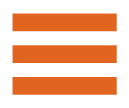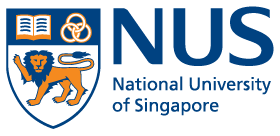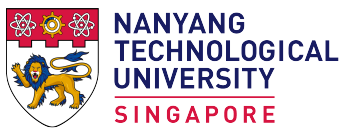Highlights
Meet a CQTian: Zhu Di
 Di holds joint appointments as Assistant Professor in the National University of Singapore (NUS) Department of Materials Science and Engineering and Senior Scientist at A*STAR’s Institute of Materials Research and Engineering.
Di holds joint appointments as Assistant Professor in the National University of Singapore (NUS) Department of Materials Science and Engineering and Senior Scientist at A*STAR’s Institute of Materials Research and Engineering.
Who are you and how did you come to CQT?
I am Zhu Di, and I have been a CQT Fellow since December 2023. I've always wanted to try academic life because all my role models had this experience. I enjoy spending time with my students and teaching is fulfilling. CQT was a natural choice when I came to NUS, because it’s where people doing quantum science and engineering gather.
How did you get interested in quantum?
In my undergrad, I was studying electrical engineering and optical communications here in Singapore at Nanyang Technology University (NTU). When I was about to graduate in 2013, I was looking at what I should do for my graduate studies and somehow, I just felt like quantum was really cool.
I ended up at MIT in the United States, where my advisor Karl Berggren worked on single photon detectors. It was related to electrical engineering, making superconducting nanowires that can detect individual particles of light. I started working on this. It's very natural when you do single-photon counting to see that light is quantised. You see one click, two clicks, three clicks...
The early application of this technology was for deep-space optical communications. When you want to do communication with, for example, the Mars or the moon or some satellites, and you shoot a laser beam down to Earth, the amount of light that can reach our telescope is at the level of single photons. When quantum became popular, people started to rely heavily on this technology for photonic quantum communication, sensing, and computing.
What were your next steps after your PhD?
When I graduated, it was around the time the US announced its National Quantum Initiative. I applied to be a Harvard Quantum Initiative Postdoctoral Fellow. I had been planning to come back to Singapore, but I had a very young daughter at the time. She was too young to travel, just 1.5 years old, so I decided to do a postdoc nearby.
My postdoc was in the group of Marko Loncar, who is famous for colour centres in diamond and lithium niobate photonics. I learned a lot there, and lithium niobate photonics is one of my research focuses now.
What is your connection to Singapore?
I was born in China and came to Singapore during my second year of high school. This was after I decided to specialise in science and engineering, and I then studied at NTU for my undergrad with a MOE scholarship. After that, I took A*STAR scholarship for PhD study in the US. Singapore really supported me a lot through the whole academic journey.
It was quite an amazing experience to leave my hometown and start a new life abroad at young age. I met my best friends who were recruited through the same programme, and that's also when I met my wife.
What is your research now about?
I try to build photonic circuits that can generate, control and detect single photons. These technologies already exist in bulk forms, using big crystals and table-top setups. My goal is to pack them all into small chips. That’s not just for the sake of making them small. I hope their performance also gets better: they should be more efficient and more stable.
We have big missions of building very complicated circuits, but on the way, we have discovered interesting new devices that did not exist before. For example, recently we developed something called layer-poled lithium niobate, an accidental discovery that could end up being very useful.
People working on photonic integrated circuits have a few types. Some of them are system architects: this game is like playing lego. They can use the lego blocks to build nice systems. My group, because we make our own chips, if we feel the building blocks are not enough, we can make new lego blocks.
Do you play lego outside of work? What other hobbies do you have?
I have two daughters now aged 3 and 6, and one of my favourite things to do with them is to build lego sets. With my group, I play tennis. We try to go every Thursday afternoon. I also developed a hobby in latte art. I started with hearts and leaves. CQT has good coffee, but before I came here, I would make a few cups every morning for my family to practice it.
How did you get recognised as an “Inventor” by MIT Technology Review?
I think I was nominated by some of my colleagues. I submitted my documents and I got it! I went to Shanghai for the event in September. They are trying to make a small community with all the past and present awardees. They also linked us up with tech investors to see whether your technology is ready to transfer.
 Di made the MIT Technology Review Innovators Under 35 (TR35) Asia Pacific list for 2024. He is pictured at the Meet TR35 Summit 2024 on 9 September 2024. He was recognised for contributions to superconducting nanowire photon detectors and lithium niobate photonics.
Di made the MIT Technology Review Innovators Under 35 (TR35) Asia Pacific list for 2024. He is pictured at the Meet TR35 Summit 2024 on 9 September 2024. He was recognised for contributions to superconducting nanowire photon detectors and lithium niobate photonics.
Are you looking to translate your tech?
My past advisors’ groups had very good startups. At MIT, my senior started Photon Spot which was one of the earliest superconducting nanowire single photon detector companies. At Harvard, my advisor has a company called Hyperlight, a leading start-up in lithium niobate modulators. I think some of our technologies are really relevant to transfer but at my current career stage, that's not my primary interest. If there come students with talents to be a good business person, that’s the point where things may happen naturally.
Are you still hiring for your group?
Yes. At NUS, our team is growing quite fast. At my stage, as long as the candidate is good, we can always create a position because we haven’t yet reached a steady state.
Find out more about the group’s research at https://www.dizhulab.org/
Learn more
Related Stories
Meet a CQTian: Shaik Muhammad Abdillah Bin Hanifah Marican June 05 2024 | |
Meet a CQTian: Nayanthara Prathap July 05 2024 | |
Meet a CQTian: Mile Gu May 16 2024 |






